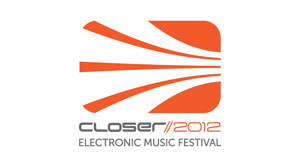Before there was Dubstep

One of the universal laws of our consumer culture is: that which is cool is destined to become uncool. Which is why, for the past couple years, I’ve been surprised again and again to find that something I thought was cool as a teenager in the 90s is now cooler than ever. Indeed, The Youth (a demographic I never expected to have much in common with again) are openly embracing a genre of music I have spent much of my life unnecessarily defending to friends, strangers, and people with “taste”: electronica.
Indeed, calling electronica “underground” these days would be a mistake. It is very much above ground—or at least, certain genres of electronic music are: house, dance, and, everyone’s favorite whipping boy, dub step.
In 2001, when rapper Eminem and DJ/all-around-nice-guy Moby were beefing (one of the more hilariously imbalanced feuds in hip-hop history), Eminem exuberantly rapped, “You’re too old, let go, it’s over, nobody listens to techno!”
Fast forward ten years. Copies of the popular beat-making software Ableton Live are flying off the shelves. Dance music is now even being used to sell things besides illegal pharmaceuticals—Swedish House Mafia for Absolut Vodka. LMFAO for Kia. David Guetta, once an awkward French DJ pushing fifty is now one of the most sought after collaborators in the world, appearing (still awkwardly) in music videos alongside Snoop Dogg and Rihanna. Deadmau5 was invited to be the house artist at MTV’s Video Music Awards. This year, we even witnessed the complete dance-ficiation of Coachella, with headliners like Kaskade, Calvin Harris, and Avicii. And yes, even Eminem’s latest album has some suspiciously techno elements.
To be sure, I think the mainstreaming of electronica is a good thing. Most of these artists have carved out some permanent place on my playlist—it’s catchy, listenable, and fun to dance to. But for the people who’ve been listening to, spinning, and producing electronica long before Skrillex hit puberty, the recent explosion of dance music is only a monotone sliver of a gigantic multi-colored spectrum.
Tonight, Portland’s only city-wide electronica festival, Closer PDX, kicks off its second year with a single message: there is still a part of electronica that is underground. Electronica is just too big, too varied, too shifting to fit comfortably in popular culture. Electronica is more than hitting preset number A4 on your Virus TI synth.
“This is the evolution of a much more mature audience,” says Jack Coleman, the fest’s organizer and the artist behind JAK. “We’re not looking for that candy-flavored sound.”
Over the course of the three-day, five-venue event, Closer PDX aims to prove that electronica artists are doing interesting things. And many of them are doing them in Portland. Whether you’re looking for the surprises of experimental, the soundscapes of more ambient, or just plain good-times dance music, there’s a show for you.
Here are some highlights:
Sappho: This Portland-based record collector eshews the laptop and goes vinyl only. Expect to hear classic prog-rock rhythms backed with danceable beats. She kicks off tonight’s opening party at Groove Suite at 10pm.
Barry Weaver: A long-time LA DJ who pioneered the LA rave/acid house scene, fuses classic techno sounds with contemporary house. He closes Groovesuite tonight from 3–4 a.m.
Bryan Zentz: One of the biggest names of the festival and an elder-statesman of sorts for the scene, Zentz is known for deep, melodic sounds and evolving complex songs from simple foundations. A must-hear. He closes Groovesuite on Saturday from 2:45–4 a.m.
Closer in the Park’s free outdoor lineup of DJs at Colonel Summers Park on Saturday from noon–7 p.m.
Check out the full listing of events at: closerpdx.com.
Follow @pomoart for updates from the fest.
For more about Portland arts, visit PoMo’s Arts & Entertainment Calendar, stream content with an RSS feed, sign up for our weekly On The Town Newsletter, or follow us on Twitter @PoMoArt!
